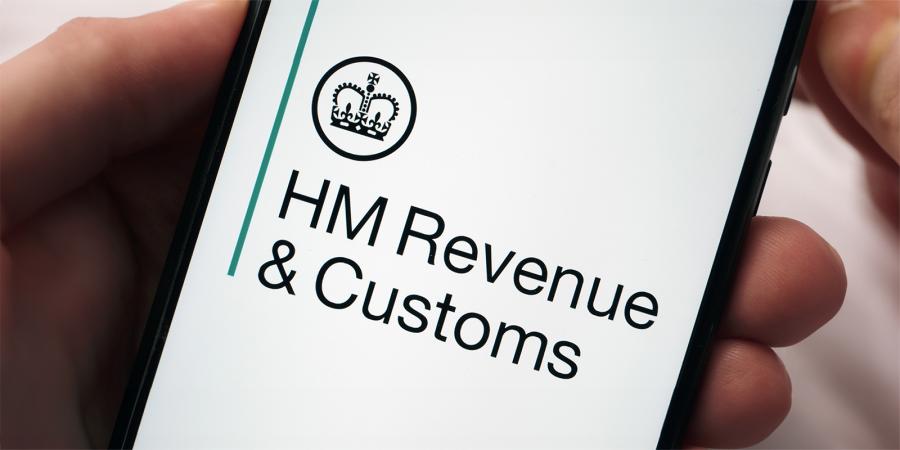HM Revenue and Customs (HMRC) have revealed losses of £47 million due to a recent phishing scam that targeted tens of thousands of tax accounts. The fraudsters sent fake emails claiming to be from HMRC, tricking people into revealing personal details. Once they had login credentials, they accessed genuine PAYE accounts and diverted tax refunds into their own bank accounts. The scam began last year and involved multiple organised crime groups operating both in the UK and abroad.
HMRC chief executive John-Paul Marks told MPs that around 100,000 taxpayers have been contacted. He emphasised that each affected individual will incur no financial loss. Marks explained that criminals used data gathered outside HMRC systems. They impersonated HMRC to trick people into sharing their personal details. Those details then allowed them to claim tax refunds that did not belong to them.
Deputy Chief Executive Angela MacDonald confirmed that HMRC shut down compromised accounts and reset login details. She clarified that HMRC did not suffer a direct cyber breach. Instead, criminals exploited leaked information obtained through phishing or other sources. HMRC has now removed the incorrect data and verified that no other records have been altered.
How the Scam Was Executed
Criminals began by sending convincing phishing emails. These emails claimed to be from HMRC. They asked recipients to click a link and verify their tax details. Many taxpayers trusted the email and followed the link. They then entered login credentials on a counterfeit HMRC page.
Once criminals had usernames and passwords, they moved quickly. They logged into genuine HMRC accounts and changed security settings. Then they added bank account details that belonged to them and filed fake tax refund claims. These claims resulted in payouts totalling £47 million.
The gang behind this phishing scam worked in organised teams. They operated from multiple locations, including jurisdictions outside the UK. This international connection made investigations tricky. HMRC collaborated with law enforcement agencies worldwide to identify and locate suspects. Some arrests took place last year, but the wider network remains active.
Impact of the Scam on Taxpayers
HMRC estimated that the phishing scam affected 0.2% of the Pay As You Earn (PAYE) population. That equals roughly 100,000 individuals. Each victim received a letter from HMRC informing them that their account had shown suspicious activity. HMRC reassured them that no money left their personal bank accounts.
Although HMRC covered the losses, the emotional impact on victims can linger. Many felt violated when they discovered that criminals had accessed their tax records. Explaining this added stress, Mark Turner, a fraud prevention specialist in London, says: “Victims often experience anxiety even after HMRC restores their security. They doubt other accounts, too.” Turner advises victims to review other accounts and report any suspicious transactions immediately.
Another cost to taxpayers is the time spent resolving issues. Victims spent hours on calls and emails, proving their identity and correcting records. The time taken to correct data delays genuine tax refunds in some cases. It also means that any future HMRC correspondence may be subject to an extra layer of scrutiny, potentially slowing routine processes.
HMRC’s Response and Actions Taken
HMRC took swift action once it detected the phishing scam. It secured all compromised PAYE accounts and erased the existing login credentials. This measure prevented any further unauthorised access. HMRC also reviewed every affected account to ensure no other data had changed.
In total, HMRC protected about £1.9 billion from similar attacks in the last tax year. Although losing £47 million is significant, this figure demonstrates HMRC’s broader success in preventing fraud. MacDonald emphasised that HMRC remains ‘resilient’ and continuously updates its security protocols.
HMRC also began a large-scale information campaign. They sent letters to all 100,000 affected taxpayers. The letters explain what happened, outline steps taken to secure accounts, and offer guidance on how to stay safe. HMRC reminded taxpayers never to click on unexpected links or share login details by email. They advised setting up strong, unique passwords and activating two-factor authentication.
Furthermore, HMRC lodged detailed reports with the National Crime Agency and the City of London Police. They hope to dismantle the organised crime groups responsible. “We are committed to bringing these criminals to justice,” said the HMRC spokesperson. They work closely with international partners because the scam involved overseas elements.
Expert Advice to Protect Your Accounts
Fraud prevention experts stress that individuals remain the first line of defence. Below are clear, actionable steps you can take to stop fraudsters from targeting your tax account.
- Use strong, unique passwords
- Choose passwords with at least 12 characters, mixing letters, numbers, and symbols. Avoid using the same password across multiple sites. Password managers can help you generate and store strong passwords securely.
- Enable two-factor authentication (2FA)
- 2FA adds an extra security layer. HMRC offers two-factor authentication (2FA) using either a verification code or a security key. Always turn it on if available. Even if criminals learn your password, they cannot access your account without the second factor.
- Watch out for phishing emails
- HMRC never requests personal login information via email. If you receive an email asking for your HMRC ID, your password, or bank details, do NOT click the links. Instead, go directly to the official HMRC website by typing “www.gov.uk/hmrc” into your browser.
- Check your email sender address carefully
- Fraudsters often use addresses that appear official at first glance. Look for small mistakes or odd domain names. For example, an address ending in “@hmrc-security.co.uk” is not a legitimate one. Genuine HMRC emails end with “@hmrc.gov.uk”.
- Keep your software up to date
- Ensure your operating system, browser, and antivirus software receive regular updates. Many phishing sites try to exploit browser or system vulnerabilities. Updates patch security holes before criminals can use them.
- Monitor your accounts regularly
- Check your HMRC account at least once a week to ensure it is up to date. If you see any transactions you do not recognise—no matter how small—report them immediately. Early detection limits the damage.
- Be cautious about public Wi-Fi
- Avoid accessing your tax account on public networks, such as those found in coffee shops or libraries. These networks are often unsecured. If you must use public Wi-Fi, consider using a Virtual Private Network (VPN) to encrypt your connection and protect your data.
- Educate friends and family
- Phishing techniques often rely on human error. Share this advice with relatives or those less familiar with online security. Teach them to identify suspicious emails and verify requests by calling HMRC directly.
- Report suspicious activity promptly
- If you suspect someone has attempted to access your HMRC account, contact HMRC immediately on their official fraud line. The faster you act, the less chance criminals have to cause damage. HMRC will guide you through locking your account and resetting your credentials.
By following these expert steps, you significantly reduce the likelihood of falling victim to a scam. You also reduce the time and stress involved in recovering from fraud. Remember, prevention costs far less than correcting the aftermath.
Fraud remains the most common crime in the UK. It affects individuals of all ages and backgrounds. HMRC’s recent experience shows that even robust government systems can prove vulnerable to phishing scams. Yet, with simple and practical measures, everyone can enhance their online security. Stay vigilant, protect your personal data, and act quickly if you suspect fraud. Your tax account—and your peace of mind—depends on it.



